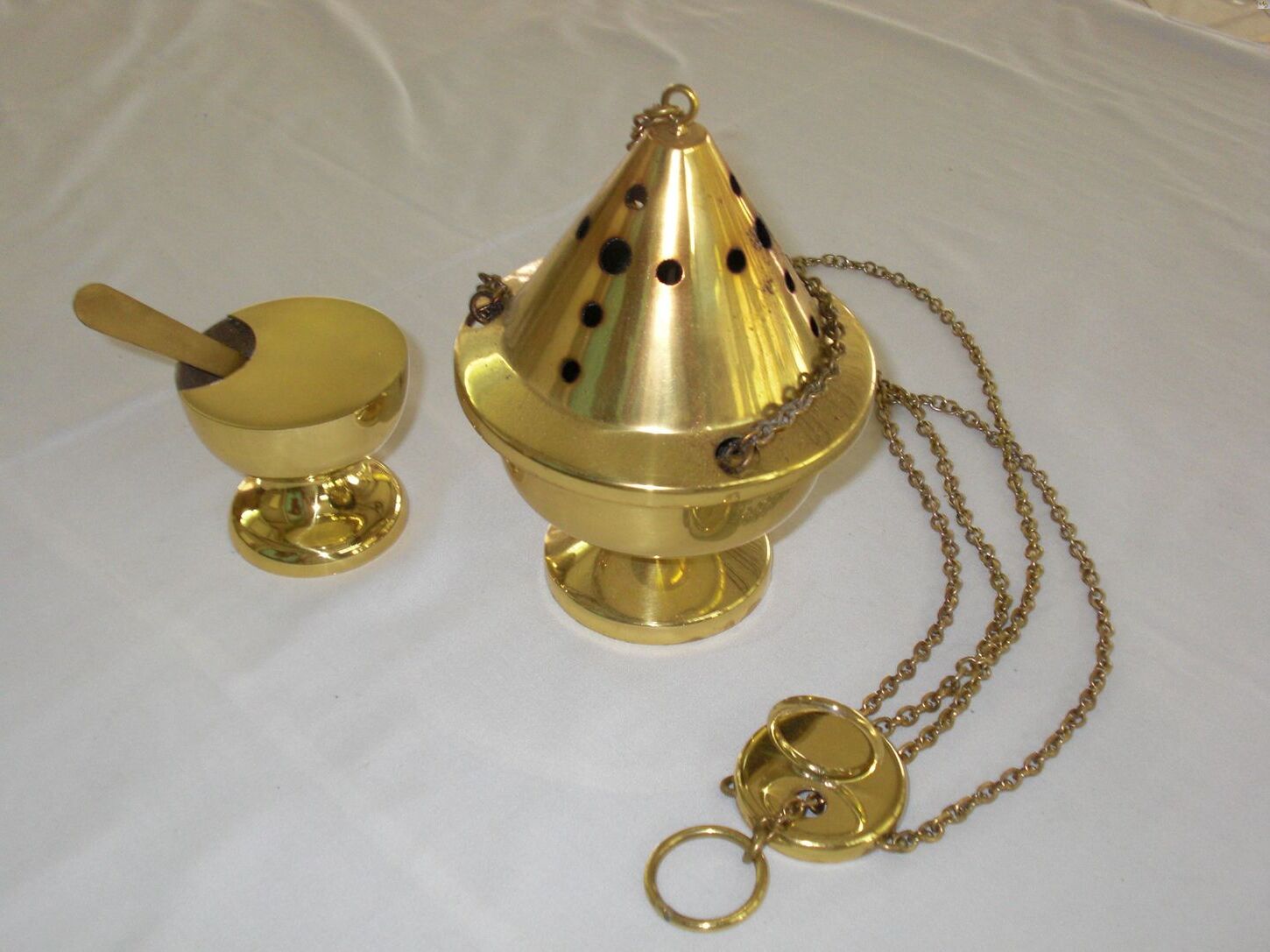
What is a scapular? A scapular is a small piece of cloth worn around the neck, often by Catholics, as a sign of devotion and protection. Originating from the Latin word "scapula," meaning shoulder, scapulars have a rich history dating back to the 13th century. They are most commonly associated with the Carmelite Order and the vision of the Virgin Mary to St. Simon Stock. The Brown Scapular, made of 100% wool, is the most well-known, promising salvation to those who wear it devoutly. Scapulars come in various colors and types, each with unique promises and significance, making them a cherished part of Catholic tradition.
What is a Scapular?
Scapulars are small pieces of cloth worn around the neck, often associated with Catholic devotion. They carry significant spiritual promises and are deeply rooted in tradition.
-
Origin of the Term: The term "scapular" comes from the Latin word "scapula," meaning shoulder. This reflects how scapulars are worn over the shoulders.
-
History of Scapulars: The earliest recorded use dates back to the 13th century. The Carmelite Order received a vision from the Virgin Mary, who presented the Brown Scapular to St. Simon Stock.
-
The Brown Scapular: The most well-known scapular, made entirely of brown wool. It must be 100% wool, with no other materials like cotton or silk.
-
The Sabbatine Privilege: This promise states that souls wearing the Brown Scapular will be released from purgatory on the Saturday before the Feast of Our Lady of Mount Carmel.
How to Wear and Use a Scapular
Wearing a scapular involves specific guidelines to ensure the wearer receives its spiritual benefits.
-
Investiture Prayers: To receive the benefits, one must be enrolled in the Scapular Confraternity by a priest. The investiture prayers include a blessing of the scapular.
-
Who Can Be Enrolled: All Catholics can be enrolled. It is customary for children to be enrolled after their First Holy Communion, and even infants can be invested.
-
Requirements for the Scapular: To gain the promise, one must wear the scapular continually, be enrolled by a priest, and ensure it is made of 100% brown wool.
-
Wearing the Scapular: It must be worn over the shoulders with one part in front and the other in the back. Both parts cannot be carried in the front or back.
Different Types of Scapulars
While the Brown Scapular is the most famous, other scapulars exist, each with unique significance.
-
Ornamentation: The scapular must be predominantly brown but can be ornamented with images like Our Lady of Mount Carmel or the Carmelite shield.
-
Different Colors: Scapulars come in various colors, each associated with different devotions. Examples include the Blue Scapular of the Immaculate Conception and the White Scapular of the Holy Trinity.
-
Blue Scapular of the Immaculate Conception: Based on a vision of Venerable Ursula Benicasa, it depicts the Immaculate Conception and the name "Mary."
-
White Scapular of the Holy Trinity: Approved by Pope Innocent III, it features a cross with a blue horizontal bar and a red vertical bar.
Special Scapulars and Their Promises
Some scapulars carry unique promises and indulgences, making them special in Catholic devotion.
-
Green Scapular of the Immaculate Heart of Mary: Based on a vision of Sister Justine Bisqueyburu, it features the Immaculate Heart of Mary and a heart pierced by a sword.
-
Five-Fold Scapular: A compilation of the Brown, Black, Blue, Red, and White scapulars, worn with a red wool cord.
-
Scapular Medals: For those who cannot wear fabric scapulars due to allergies, scapular medals are an acceptable substitute.
-
Indulgences: Wearing the Brown Scapular grants indulgences, particularly significant for members of the Scapular Confraternity.
The Scapular Confraternity
The Scapular Confraternity is a community of Catholics devoted to Our Lady, seeking her protection through the Brown Scapular.
-
Confraternity of the Brown Scapular: The nucleus of the Carmelite Order, providing spiritual support and guidance to its members.
-
Carmelite Order: Named after Mount Carmel in Palestine, the order is believed to have descended from the Prophet Elias.
-
Universalization of the Carmelite Order: The gift of the scapular universalized the Carmelite Order as Our Lady's Family.
-
Legislation on the Scapular: The Sacred Congregation of Indulgences specified that the scapular must be made entirely of wool, woven into cloth.
Material and Shape Requirements
Specific guidelines ensure the scapular's validity and effectiveness.
-
Material Requirements: The scapular must be made of 100% brown wool, with no other materials allowed.
-
Shape Requirements: It must be rectangular or square, ensuring it hangs correctly over the shoulders.
-
Ornamentation Guidelines: While ornamentation is permitted, the wool brown color must predominate.
-
Wearing Instructions: The scapular must be worn over the shoulders, with one part in front and the other in the back.
Alternatives and Enrollment
For those with allergies or other issues, alternatives and proper enrollment are available.
-
Allergies and Alternatives: If one has a serious allergy to wool, they can wear the scapular over clothing, encase it in plastic, or wear a scapular medal.
-
Enrollment Process: Enrollment in the Scapular Confraternity is performed by a priest, including a blessing of the scapular.
-
Indulgence for Scapular Confraternity Members: Members receive an indulgence each time they wear the scapular.
Theological and Cultural Significance
Scapulars hold deep theological and cultural importance within the Catholic faith.
-
Theological Soundness: The Scapular Promise has been studied and found theologically sound, confirmed by numerous miracles.
-
Cultural Significance: Scapulars are an integral part of Catholic culture, worn by millions worldwide.
-
Devotional Significance: The scapular is a silent prayer, showing one’s consecration and dedication to the Blessed Virgin Mary.
Variations and Unique Scapulars
Different scapulars cater to various devotions, each with its own history and significance.
-
Variations in Scapulars: Besides the Brown Scapular, others include the Blue Scapular of the Immaculate Conception and the White Scapular of the Holy Trinity.
-
Five-Fold Scapular Details: A unique compilation of five different scapulars, worn with a red wool cord.
-
Scapular Medals as Alternatives: Medals are an acceptable substitute for those who cannot tolerate fabric scapulars.
Indulgences and Membership
Wearing scapulars and joining the Scapular Confraternity offer spiritual benefits and indulgences.
-
Indulgences and Scapulars: Wearing the Brown Scapular grants indulgences, reducing time in purgatory.
-
Confraternity Membership: Open to all Catholics, providing spiritual support and guidance.
The Carmelite Tradition
The Carmelite Order's rich history and universalization through the scapular.
-
Carmelite Tradition: The order, originating from Mount Carmel, has a rich history dating back to the Prophet Elias.
-
Universalization of the Order: The gift of the scapular made the Carmelites a universal family dedicated to Our Lady.
Legislation and Material Requirements
Specific guidelines ensure the scapular's validity and effectiveness.
-
Legislation on Scapulars: The Sacred Congregation of Indulgences specified that the scapular must be made entirely of wool.
-
Material Requirements for Scapulars: The scapular must be made of 100% brown wool, with no other materials allowed.
-
Conclusion: Scapulars are a significant part of Catholic devotion, serving as a visible reminder of one’s consecration and dedication to Our Lady.
The Significance of Scapulars
Scapulars hold a special place in Catholic devotion, especially within the Carmelite tradition. These small pieces of cloth, worn around the neck, symbolize a deep commitment to faith and devotion to the Virgin Mary. The Brown Scapular, in particular, carries promises of protection and salvation, making it a cherished sacramental.
From their origins in the 13th century to their various forms today, scapulars have evolved but retained their core significance. Whether it's the Blue Scapular of the Immaculate Conception or the Green Scapular of the Immaculate Heart of Mary, each has its unique history and promises.
Wearing a scapular isn't just about tradition; it's a daily reminder of one's faith and dedication. For many, these simple pieces of cloth offer comfort, protection, and a tangible connection to their spiritual beliefs.
Was this page helpful?
Our commitment to delivering trustworthy and engaging content is at the heart of what we do. Each fact on our site is contributed by real users like you, bringing a wealth of diverse insights and information. To ensure the highest standards of accuracy and reliability, our dedicated editors meticulously review each submission. This process guarantees that the facts we share are not only fascinating but also credible. Trust in our commitment to quality and authenticity as you explore and learn with us.


